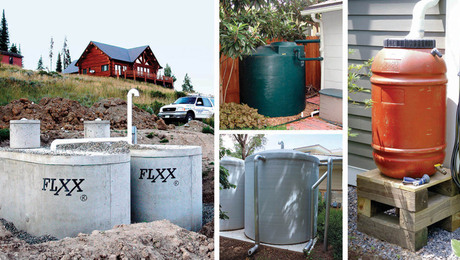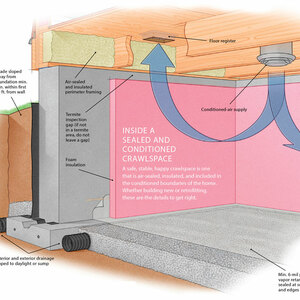Red,
It shouldn’t be necessary to cut the valley rafters into the existing roof as long as the existing roof will support the weight of the new one. Even if it won’t it still makes no difference as you will have to beef it up regardless of which method you use. Most roofs built in the last 60 years or so are plenty strong but if in doubt you can add a knee wall in the attic or add some bracing down to a load bearing partition. This is probably not necessary however. Now to answer your question: First build your roof over the addition but don’t sheet it as yet. Use a string line or a lazer to transfer the top of the ridge and it’s centerline to the existing roof. Mark this point and measure between it and the last set of common rafters/closest truss to the existing roof. Cut a ridge board out of appropriate lumber and place it according to your line/marks. I should mention that you need to snap lines from the mark that you transfered with your line down to the points on either side of the roof on the new addition which will be the start of the valleys. It helps to pull a tape from the same spots on both sides of the addition up to the mark designating the end of your ridge(where it dies into the existing house roof) in order to establish that the ridge is square to the existing eaves and straight with the ridgeline on the new addition. This establishes your valleys. I am assuming in this discussion that you have some idea how to cut rafters and have some basic framing knowledge. Lay out your rafter spacings on the snapped valley lines and then tape them off from the top of the ridge down to your layout marks. In your case you will have a 4/12 plumb cut at the ridge and a 4/12 level cut at the bottom with the bevel set for a 7/12 which if memory serves me correctly is 30 degrees (you can verify that with your speed square). The rafters are then nailed on to the ridge and to the sheeting and the rafters underneath where possible. If you desire to spread the weight over the rafters then you can install a “california valley” which is basically a 2×10 with the ecge beveled off and nailed on the valley line. The rafters are then nailed to that at the valley end. This is definitely the better way to go but is more work and money.
mark


















Replies
hello professor, thank you for your comment. I knew it was simpler than I was making it out to be if you know what I mean, the last question I have is with a 24in spacing how do you correctly mark the valley plate
You could place your 2' square with the short end on the last common of your new addition flush with edge. Slide it down the rafter until the squares' long end hits the valley plate. Mark that spot as the long point of your first valley rafter. Install it and repeat (Or do the common difference thing if you're brave).
Thank you Spewman for your response, again I have been shown the obvious is just in front of me. It is obvious it takes experience to make something difficult so simple .My field of expertise is cabinetry so I do not get out side as much as I'd like .
Red,
No problem dude, that's what we're all here for. Good luck with your project.
Mark
Professor,
I'm curious as to what bevel you would use for the valley board in this case. Or just assume that both roofs were 4-12s. What would you bevel the valley board? I ask this because there is a rather lengthy discussion over at JLC in the framing message board about this very subject. I think you would enjoy it.
http://www.jlconline.com/cgi-bin/jlconline.storefront/3e0a136d002645b1271a401e1d2905e7/Catalog/1139?read=5589
Tim,
I would probably cut about a 2' scrap of two -by material and lay it on the valley line and up against the adjacent rafter(the one up against the existing building . You can then mark the bevel angle from the rafter. Experience tells me that the bevel in this case is going to be approximately 45 degrees but I have found that this is one of those cases where the angle needs to be verified in the field. I'm pretty good with calculating roofs but I don't know how to calculate that angle mathematicaly. I'll bet Boss hog knows how from all his work with truss calculations. Maybe he can weigh in here.
Mark
Tim,
After I originally replied to your post I went over and checked out the link you gave me. Very interesting indeed! I figured there was a relatively simple mathematical method and I found the answer there. Just figure the backing angle on each roof and add them together, then subtract the total from ninety degrees and ,Viola you have your angle to bevel the valley sleeper. Long discussion but mostly because some knothead just can't admit he is wrong. Thanks for the tip, I think I'll be visiting that site often. Obviously some very knowledgeable guys on that forum.
Mark
Professor,
The only "hard" part is correctly figuring the backing bevels for each side of the hip/valley when it is irregular. I'm glad you enjoyed JLC. There have been some very interesting discussions. Check out the ones that deal with figuring the plywood cut on Octagons.
Boss Hog,
I'm curious if you have a formula for figuring the bevel on a valley board that is framed blind or california style. Do you have any info from the company you work for? Check out that link I posted to the professor.
Edited 12/25/2002 11:49:26 PM ET by TIMUHLER
Edited 12/25/2002 11:49:50 PM ET by TIMUHLER
I checked out the link, but don't completely understand the math. (I'm no math wiz)
We don't really have to worry about compund bevels on anything, so I have no clue how to do the math.
I've never seen a valley board beveled, actually. Don't see much point in it. I was more impressed by what came out the last time I blew my nose.
Boss,
That whole exercise was purely academic. Just trying something new. Thanks for replying.
Edited 12/27/2002 9:07:48 AM ET by TIMUHLER
Tim,
I'm going to have to go back thru the JLC discussion and reread the method posted for using the construction master 4 to figure the backing angles. That said I was thinking about it today and Ken's method does make perfect sense from a geometrical standpoint. Using the backing angles because the hips are running in the same plane as the valley sleeper will be. So adding the 2 together and subtracting from 90degrees makes sense logically as well as mathematically, Not to mention the angles in question were used on a real roof and worked perfectly. One other thing (you probably already know this) the backing angles for a regular hip are availabe in the rafter book. In that case you would just double them and then subtract from 90 and viola, there you go. Again thanks for the tip to the JLC disscusion, I'm going to go back there and ask Ken some questions as he seems to really know his math.
Mark